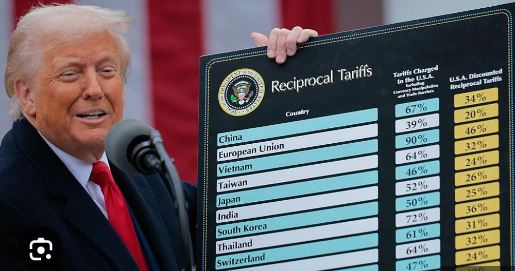President Donald Trump announced sweeping new tariffs on foreign imports, imposing a universal 10% tariff and higher rates on countries with significant trade deficits with the United States, notably China, Japan, and the European Union. Chinese imports faced effective tariffs exceeding 50%.
This policy led to significant market turmoil, with the Dow Jones Industrial Average dropping nearly 1,700 points (4%), marking its worst day since 2020. The S&P 500 and Nasdaq also experienced substantial declines.
Companies heavily reliant on international supply chains were particularly affected. Apple, which depends on Asian manufacturers like Foxconn, saw its stock fall over 9%. Nike, sourcing much of its production from Vietnam, China, and Cambodia, experienced a more than 14% drop. Other retailers such as The Gap, Abercrombie & Fitch, Macy’s, Lululemon, and Boot Barn also faced steep declines.
In retaliation, China imposed tariffs of 34% on all U.S. goods starting April 10 and filed a lawsuit with the World Trade Organization. Additionally, China added 15 U.S. companies to its export control list and placed 10 more on its Unreliable Entities List.
The U.S. Department of Commerce also expanded its trade blacklist, adding 36 Chinese high-tech companies, including Yangtze Memory Technology Co., citing national security concerns.
These escalating trade measures have heightened tensions between the U.S. and China, with significant implications for global markets and international trade relations.
